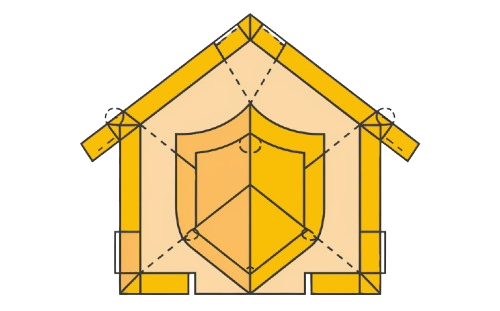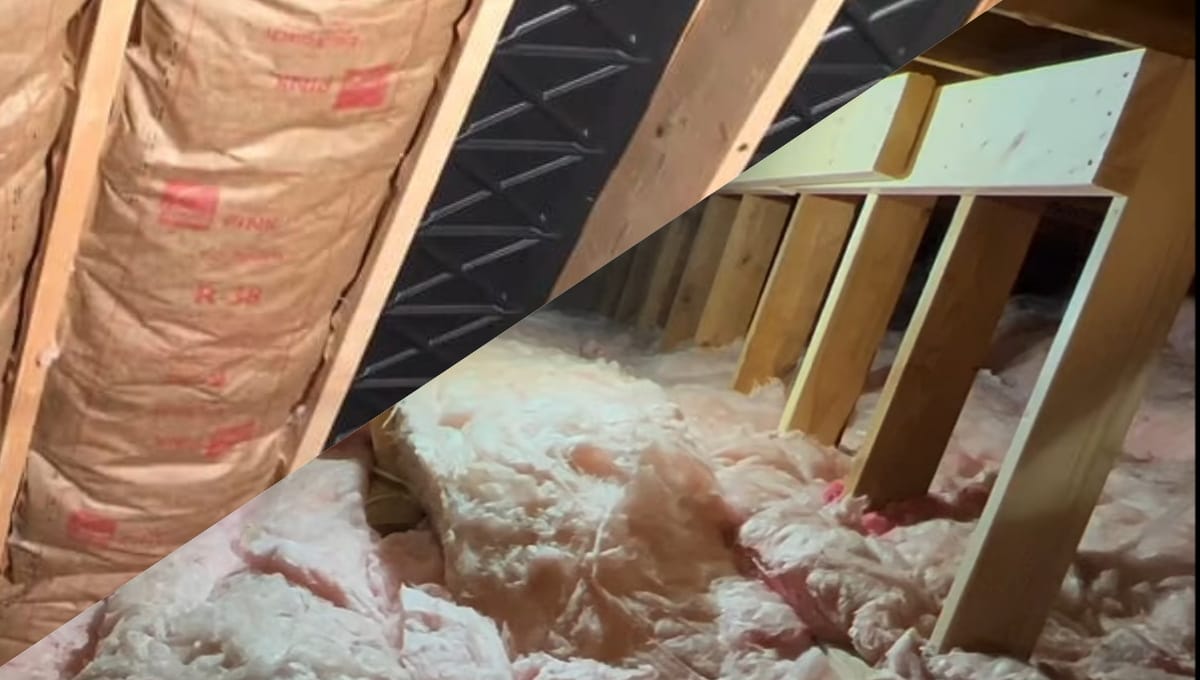When thinking about the attic, deciding whether to insulate attic floor or ceiling can seem challenging. It’s important to know the difference between the two options and how they impact the energy efficiency of your home. We’ve got you covered with the insights you need to make the best choice. Specifically, insulating the attic floor is great if you want to separate the attic from the living space, keeping 50% of the energy within the conditioned areas of the home. On the other hand, insulating the ceiling is useful when you’re creating a vented or unvented attic space for storage or other purposes. The difference lies in what you want to achieve—better insulation or controlled airflow—and whether the attic is part of the conditioned area of the house.
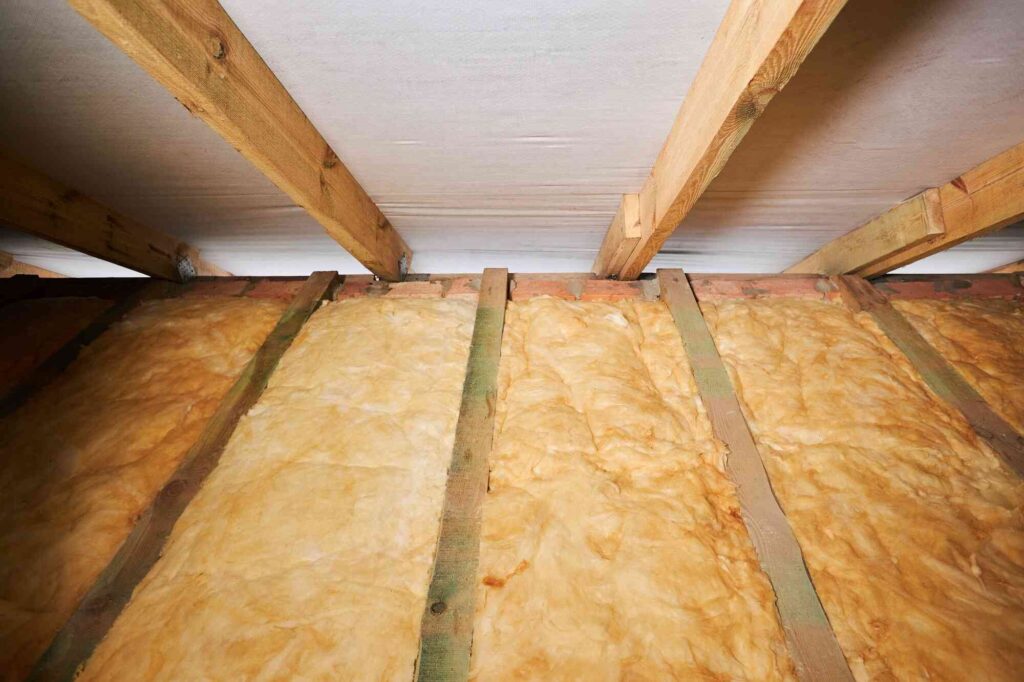
Choosing the right option for insulating your attic depends on your goals and budget. To maximize efficiency and minimize costs, consider how the area affects the rest of the house. For the ceiling, spray foam insulation is a product that creates a tight seal and supports an unvented attic, though it’s worth noting that the spray foam insulation cost can vary depending on your attic’s size and condition. If your attic is vented, the floor might be the ideal choice as it helps maintain airflow and prevent energy loss. This article is designed to help you decide what works best, based on available options, your needs, and the end goal for the attic space.
The Difference Between Attic Floor and Attic Ceiling Insulation
The difference between insulating the attic floor and the ceiling is critical to how your home manages airflow and energy efficiency. When you insulate the floor, you create a separation between the conditioned spaces below and the attic, ensuring warm or cool air stays where it’s needed. Conversely, insulating the ceiling turns the attic into a conditioned area. These differences can affect the products used, as spray foam is better suited for ceilings, while blown-in insulation is typically applied to floors. Let’s take a closer look at how these two approaches can be used effectively.
Airflow in Attics
In a vented attic, air flows freely through vents, which is ideal for storage spaces or unconditioned environments. On the other hand, an unvented attic relies on insulation to create an airtight seal, preventing leaks and enhancing energy efficiency. To make the right choice, examine the available options, like batt, spray foam, and blown-in insulation, to determine which suits your needs. These products can help you balance airflow, energy use, and comfort. Whether you are insulating the floor or ceiling, understanding the critical role of air movement and insulation placement ensures the best results for your attic.
Available Insulation Products For Attics
When it comes to choosing insulation for your attic, homeowners have several options depending on whether they want a vented or unvented attic. For vented attics, blown-in or batt insulation is commonly used to cover the floor and provide a basic barrier to prevent air exchange between the attic and the conditioned spaces below. Blown-in products are effective and can be installed quickly, while batt insulation requires careful placement. If you are aiming for an airtight attic, spray foam insulation for attic spaces is an excellent choice, as it both air-seals and insulates, creating a tight seal against air leaks.
For ceilings, dense pack cellulose or spray foam are often preferred. These materials can be installed to create an unvented space and are especially effective in preventing issues like condensation. If the roof has baffles for airflow, additional steps are needed to prevent high risks of moisture buildup. Some homeowners worry about roof shingles damaged by spray foam, but this is a misconception. Properly installed spray foam does not trap excess heat or weaken shingles. Studies show that temperature changes caused by spray foam are minimal and do not impact the lifespan of roofing materials. No matter which products you choose, consider the nature of your attic’s setup—whether stuffed rafters or open spaces—and before installation, ensure the materials are paired correctly to maximize energy efficiency and lower bills.
Also Read:Should Attic Insulation Be Faced or Unfaced?
Should I Insulate Both My Attic Floor And Ceiling?
Insulating both the floor and ceiling of your attic may seem like a good idea, but it’s typically unnecessary. If your attic is encapsulated and fully sealed from the outside with no soffits, vents, or gable fans, you might only need to insulate the roof. For most homes, insulating both spaces creates two thermal barriers, which can be inefficient and increase costs. If you want your attic to remain unconditioned, insulating the floor is enough to make your home more energy-efficient.
Insulating both the floor and ceiling of your attic might seem like a good option, but it depends on your goal and how you use the space. Adding insulation to both areas creates two thermal envelopes, essentially dividing your attic into separate conditioned environments. While this might sound beneficial, it can lead to higher costs as more insulation and materials are required. For a fully encapsulated attic, insulating the ceiling can make the attic part of the conditioned space, maintaining an even climate and keeping the rest of your home energy-efficient. On the other hand, insulating only the floor is often sufficient to cut off the attic from the conditioned areas below, creating a clear boundary for airflow and temperature.
If your attic is used for storage, insulating the floor will typically do the job without significant additional costs. However, if you plan to add living space or HVAC systems, insulating the ceiling becomes essential. Materials like spray foam or batt insulation can be used, depending on the design and purpose. While the idea of insulating both areas might appeal to some, it’s important to consider that it is a newer concept and may not always be practical. Differing opinions suggest removing existing insulation in certain cases, as maintaining multiple thermal barriers could lead to inefficiency. Before choosing, think about the roof structure, environment, and your attic’s specific needs to ensure the best results.
Also Read: Does Attic Insulation Help With Humidity
Do I Need a Vented or Unvented Attic?
To determine whether a vented or unvented attic is best for you, it’s important to understand the technical differences between the two.
Signs You Want A Vented Attic
Signs that you may want a vented attic include using it for storage and not being worried about temperature control. Homeowners often prefer this option when there is no ductwork running through the attic, and their primary goal is to lower energy bills. This type of attic allows air to flow freely, which prevents moisture buildup and keeps your belongings safe in an unconditioned space. If you don’t plan to use the attic for living purposes, a vented attic is a practical and cost-effective choice.
Signs You Want An Unvented Attic
In contrast, signs that you might need an unvented attic include wanting to store items that are sensitive to heat, such as musical instruments or electronics, or planning to finish the attic as a living space. Homeowners with HVAC ductwork upstairs often choose this option to prevent excess heat during the summer and maintain consistent temperatures. An unvented attic provides better temperature control, which can protect your belongings and reduce strain on your cooling systems. Whether you’re looking to make the attic part of your living area or ensure better airflow management, this type of attic can be a great solution.
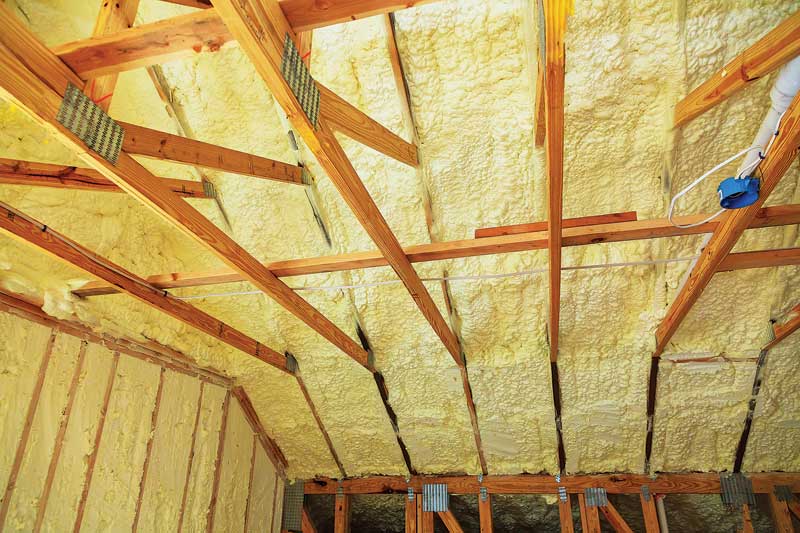
Which Is More Affordable: Insulating the Attic Floor or Ceiling?
When it comes to insulating your attic, the cost and purpose of the insulation play a big role. Insulating the floor is usually more affordable than the ceiling because it requires fewer materials and less complex installation. If you choose to insulate the floor, it creates a vented attic, which is ideal for basic storage without controlling the temperature. This option is also more budget-friendly, as it covers only one surface, making it a good choice for homes with smaller square footage in the attic. The reduced quantity of insulation needed for the floor makes this approach a practical solution for homeowners looking to save thousands of dollars.
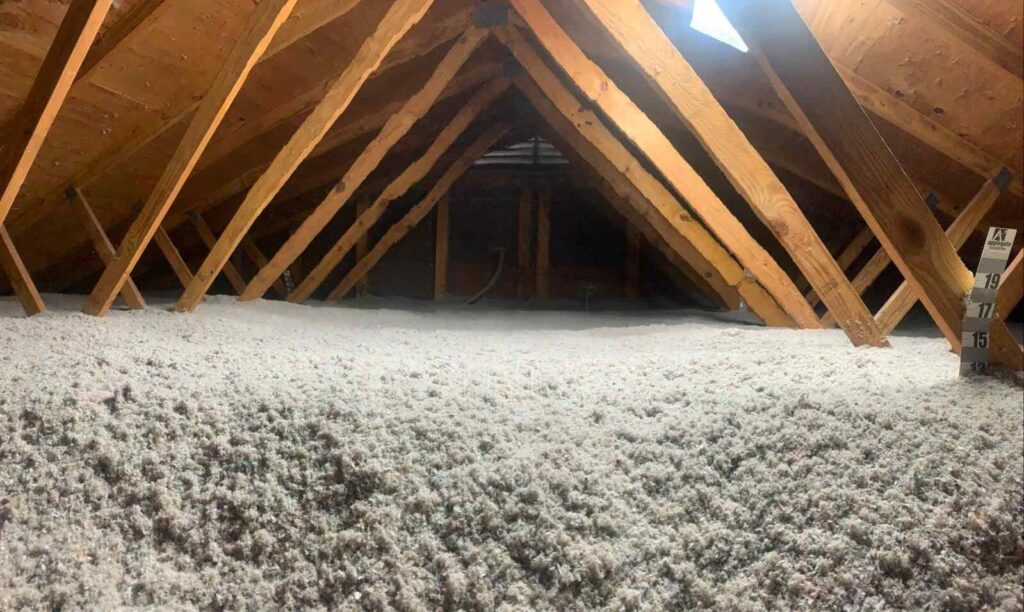
On the other hand, insulating the ceiling can be more expensive because it often involves specialized techniques and additional structural considerations. This method is ideal for creating unvented attics where the attic becomes a conditioned space. It’s especially important if your roof includes gables or has larger square footage, as the amount of insulation required increases. While insulating the ceiling offers more benefits for temperature control, it’s essential to carefully compare your needs and budget before deciding which option is better for your home.
Final Thoughts on Insulating Your Attic
When deciding on attic insulation for your existing home, the choice between the attic floor and the attic ceiling depends on your needs. Insulating the attic floor creates a vented attic, ideal for storage and minimal temperature control in the upstairs space. On the other hand, insulating the attic ceiling forms an unvented attic, which is perfect for preserving temperamental storage items, converting the space into a living area, or protecting HVAC ductwork. To maximize energy efficiency, consider air-sealing with an airtight seal using air-sealing products or spray foam insulation. If you’re on a budget, fiberglass or other budget insulation options can work, but ensure additional sealing for the best results.
Ready to upgrade your attic insulation for lasting comfort and savings? Contact us today to get expert advice and a tailored solution that suits your home and budget. Our professionals are here to help you achieve the best energy-efficient results!
FAQ
Is it Better to Insulate the Attic Floor or the Ceiling?
Insulating the attic floor is ideal for creating a vented attic, which is great for storage and does not require temperature control. On the other hand, insulating the ceiling creates an unvented attic, making it suitable for living space, HVAC ductwork, or temperamental items. Your choice depends on whether you need a functional storage area or a fully conditioned attic environment.
What Part of the Attic Should Be Insulated?
In unfinished attic spaces, it’s best to insulate between and over the floor joists to seal off the living space below. If air distribution runs through the attic, you should consider insulating the rafters to move the attic into the conditioned space.
Where Should You Not Put Insulation in the Attic?
When laying additional insulation, never lay it over recessed light fixtures or soffit vents. Always keep at least three inches away from lights unless they are IC-rated. Work from the perimeter toward the attic opening to ensure proper placement and safety.
Should I Insulate the Roof or Ceiling?
If the ceiling in your attic is too low to make it a living space, you should insulate the floor. Insulating the ceiling creates a new heating zone, meaning you’ll be paying more to heat your attic without added benefits.
